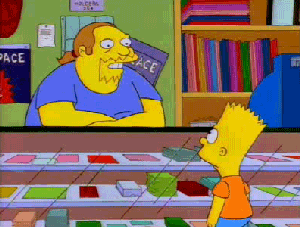electronics
Take it Apart!
Ten Dollar TuesdaysIn the Robot Test Kitchen, we talk about five main barriers that we typically face in conducting technology programming in our libraries: time, budget, skill, interest, and support. It’s our belief that most of these are not impossible barriers, but sometimes it’s hard to see how. Especially when things like your time and budget are already stretched paper thin.
With this new weekly feature, Ten Dollar Tuesdays, we will be tackling the budget question with programs you can run at your library for under $10. We’ll also address the interest and support questions by asking you to share your inexpensive STEM programs in the comments, and to let us know what kinds of feedback you’ve gotten when you’ve tried these or similar programs in your buildings!
Take It Apart
Cost: $0
Age range: tweens & teens
Group size: Up to 20, depending on materials
Staff amounts: 1
- Give kids an opportunity to explore how things work, how they’re put together, and what happens if they they take them apart.
- Ask for donations of broken appliances (no tube TVs or microwaves) and computers, supply tools, and let kids explore.
- Disassembling a PC is a great learning opportunity, and you don’t necessarily need to know a lot about computer hardware. I supplied printed diagrams for kids to match up the components, and I learned a lot from YouTube videos. You may need special screwdrivers for some of the screws on the computer case; our IT department was happy to let us borrow those, and a staff member even helped at the program
- Taking things apart can very exciting, so caution your tweens and teens not to get carried away and get scrapes or cuts on sharp parts
- Ask kids what similarities they saw, what surprised them, what parts they already knew about, and what they would like to learn more about
- After the program, you may be able to salvage some parts for a future craft program (another Ten Dollar Tuesday!), or check with your local recycling facility to see what they can accept.
Have you done a Take it Apart program? Share your experience with us!
Radio Shack is not scary
True ConfessionsI’ll tell you what, if your town still has a Radio Shack, it’s worth going in there every now and then. That’s the store I’d give a wide berth in the mall while Christmas shopping, and got sweaty palms just thinking about entering when there was something on my dad’s list that required a stop in there.
It’s a little like going into a comic book shop for me. I’m not a lifelong comics fan like some librarians, so when I started venturing into comic book stores, I was a little trepidatious, and worried that I’d ask stupid questions or, buy the wrong stuff, or well… have to deal with Comic Book Guy.

Worst. Librarian. Ever.
But really, the folks I’ve talked to are so glad you’re there and interested in doing some cool maker stuff. It’s not scary. It’s not intimidating. (It’s not busy, so you’ll get good customer service.) But you know what? The Radio Shack folks and the comic book store folks, they’re kind of like librarians.
They’ve got information about stuff in their collection that we want to know more about but are unsure about where to start. And I don’t know if it’s in their training manual or I’ve just gotten lucky, but every time I’ve asked for help (and that would be every time I’ve gone into one of their stores) they’ve moved out from behind the counter to show me exactly what I asked about. And when I ask what new cool robotics stuff they’re hearing about or have in stock, they’re happy to chat, and excited to hear that the Maker movement is happening in libraries.
So, if you see a project that you’re thinking about trying and you’re weighing a trip to Radio Shack or the shipping costs of ordering online, try stopping in to the brick-and-mortar store. Just like we want those local bookshops to survive, we should want local places with maker tools to survive too. You may be pleasantly surprised and encouraged to try more hands-on tech. Tune in later this week to see what I bought on my last trip and how the program I used it in went down.
